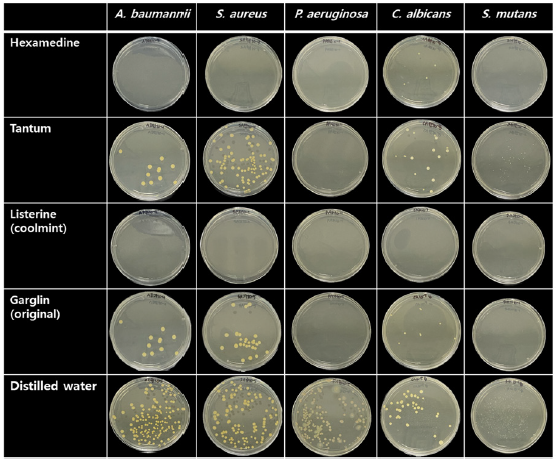Abstract
This in vitro study aimed to evaluate the antimicrobial effects of several commercial oral rinses on aspiration pneumonia‑inducing microorganisms. The experimental products of four commercial oral rinses (Hexamedine, Tantum, Listerin [coolmint], and Garglin [original]) were selected for antimicrobial effect evaluation. Sterile distilled water was used as a negative control. Four pneumonia‑causing microorganisms (optical density=0.700) and Streptococcus mutans (optical density=0.700), the most common oral bacteria, were combined with the experimental oral rinses for 1 min, and the live cells were counted as a colony-forming unit. For statistical analysis, one-way analysis of variance and Tukey’s test were performed using SPSS version 26.0. Hexamedine and Listerin (coolmint) showed the highest antibacterial effects on all microorganisms, showing >99% of colony-forming unit reduction, compared to that of Tantum and Garglin (original). In this study, Hexamedine and Listerin (coolmint) confirmed significant antimicrobial effects on aspiration pneumonia‑inducing microorganisms. These results suggest that commercial oral rinses, such as Hexamedine and Listerin (coolmint), may be effective oral care methods for preventing infection in inpatients.
Figures & Tables

Fig. 1. Antimicrobial effects of test oral rinses.


